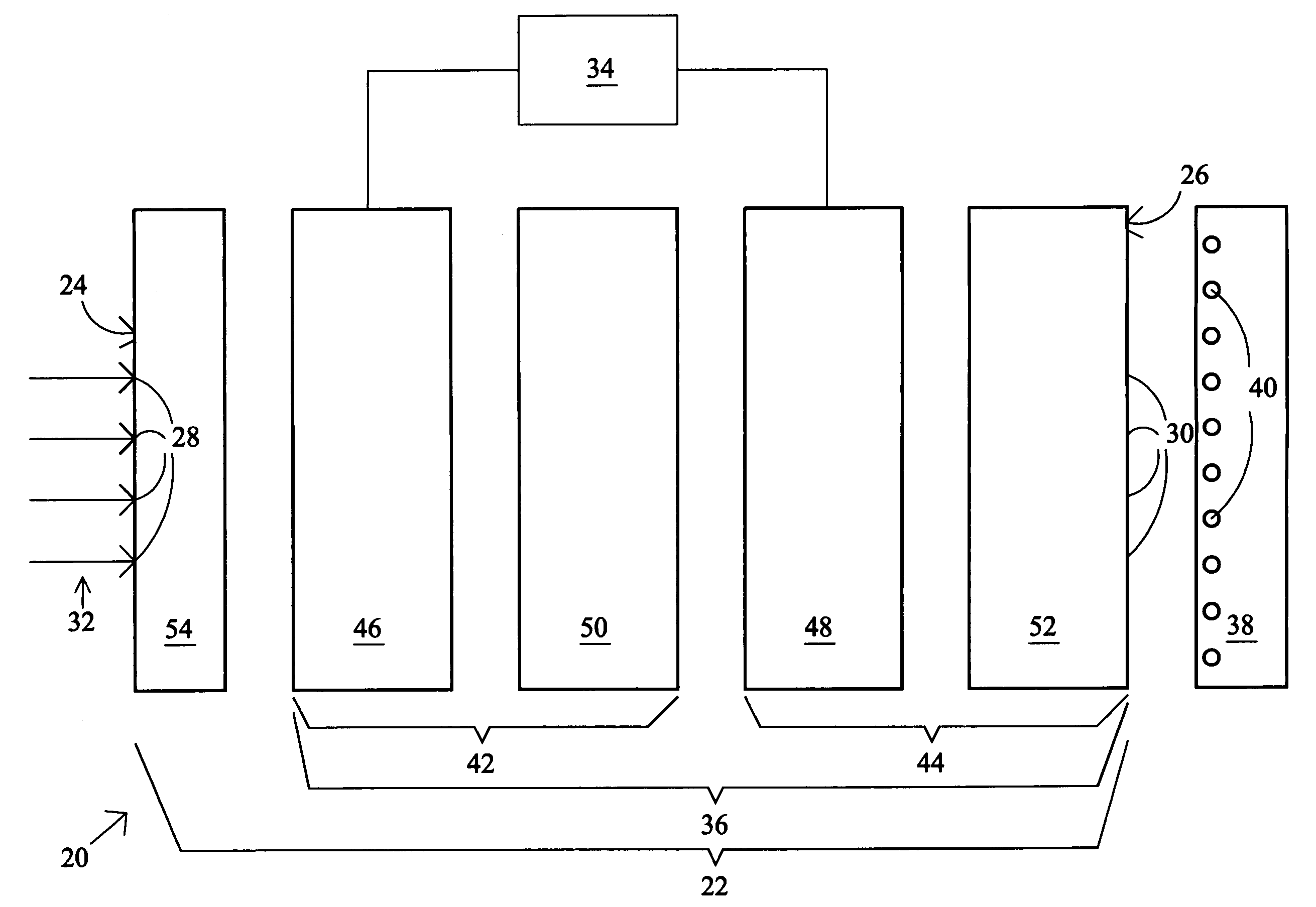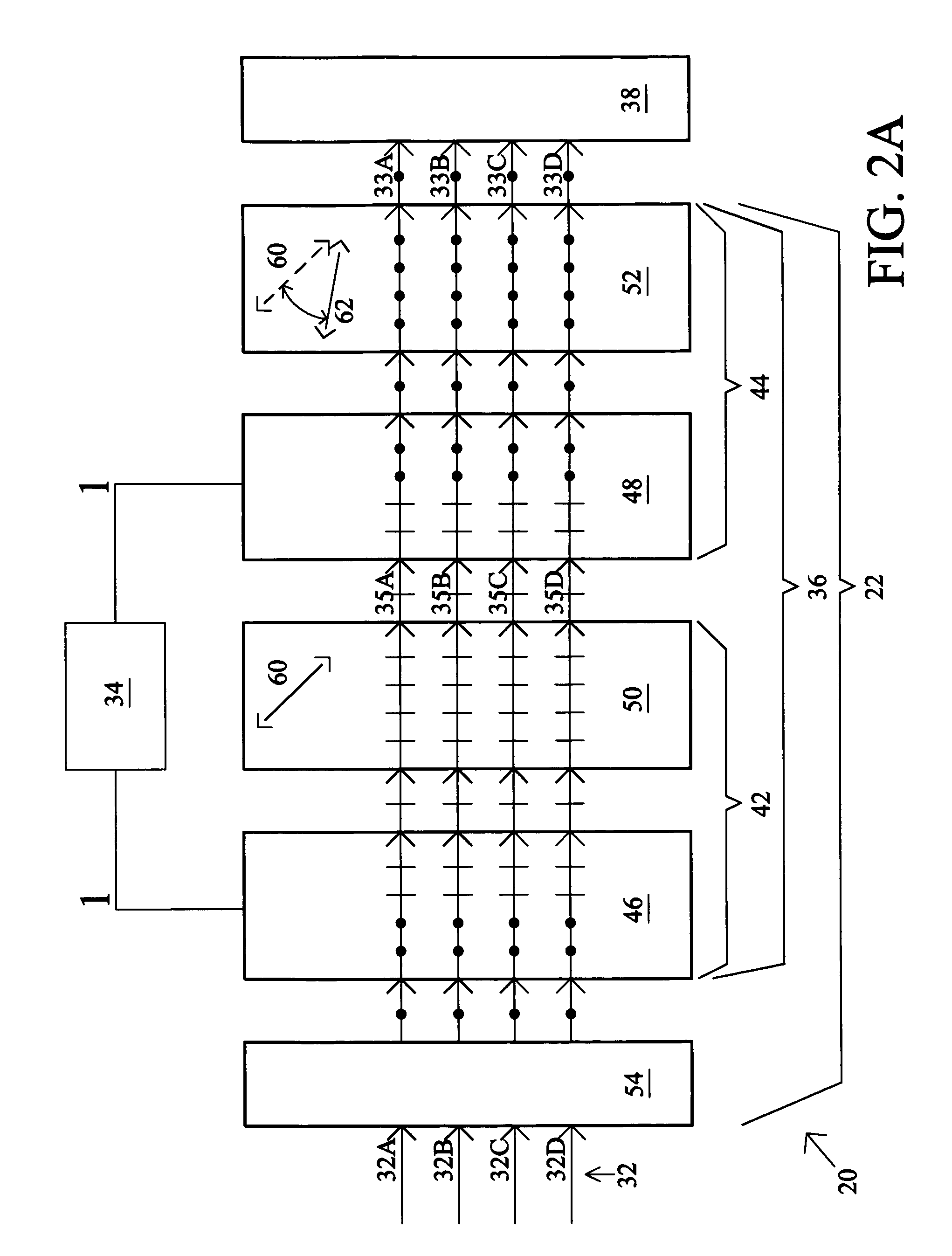Image processing system optical shifting mechanism
a technology of optical shifting and image processing, applied in the field of image processing system, can solve the problems of blur filter significantly limiting the capacity of the detection system to produce sharp images, requiring matching electronically controlled devices, and aliasing distortions or undersampling of such systems
- Summary
- Abstract
- Description
- Claims
- Application Information
AI Technical Summary
Problems solved by technology
Method used
Image
Examples
Embodiment Construction
[0023]FIG. 1 depicts an image processing system 20 that includes an optical assembly 22 having an input surface 24 and an output surface 26. The input and output surfaces 24, 26 define a plurality of continuous input and output positions 28 and 30, respectively, for individual light rays 32 of an image to enter (light rays 32) and exit (light rays 33, see FIGS. 2A–5A), respectively, the optical assembly 22. In general, the light rays 32 are preferably randomly polarized light. However, any type of polarized light may be used, if desired. The image processing system 20 includes a mode-controlling device 34 that operates a light shifting apparatus 36 so that a respective one of the light rays 32 incident on a corresponding one of the input positions 28 is selectively shiftable consecutively between different ones of the output positions 30 for projection onto an image sensor 38. The mode-controlling device 34 permits dynamic control of the image processing system 20. The sensor 38 pre...
PUM
 Login to View More
Login to View More Abstract
Description
Claims
Application Information
 Login to View More
Login to View More - R&D
- Intellectual Property
- Life Sciences
- Materials
- Tech Scout
- Unparalleled Data Quality
- Higher Quality Content
- 60% Fewer Hallucinations
Browse by: Latest US Patents, China's latest patents, Technical Efficacy Thesaurus, Application Domain, Technology Topic, Popular Technical Reports.
© 2025 PatSnap. All rights reserved.Legal|Privacy policy|Modern Slavery Act Transparency Statement|Sitemap|About US| Contact US: help@patsnap.com



